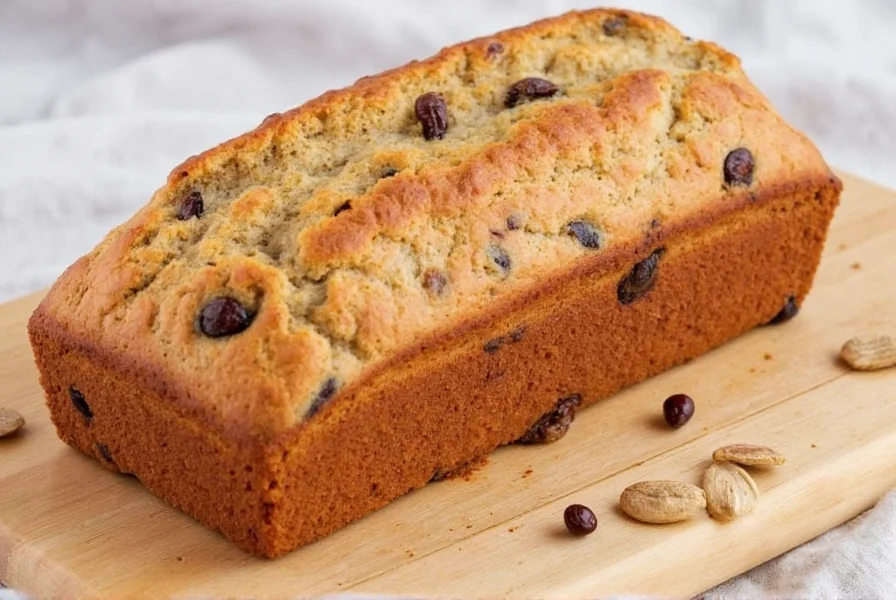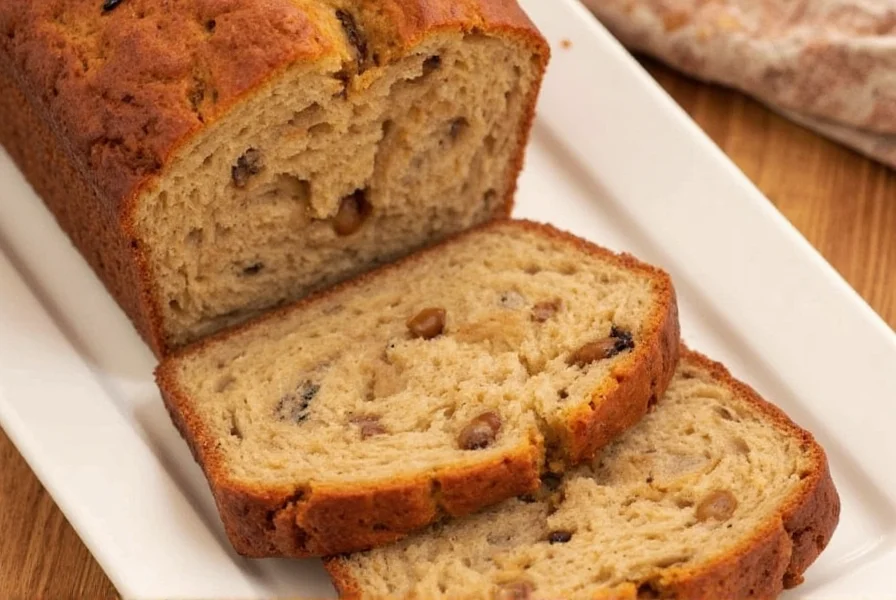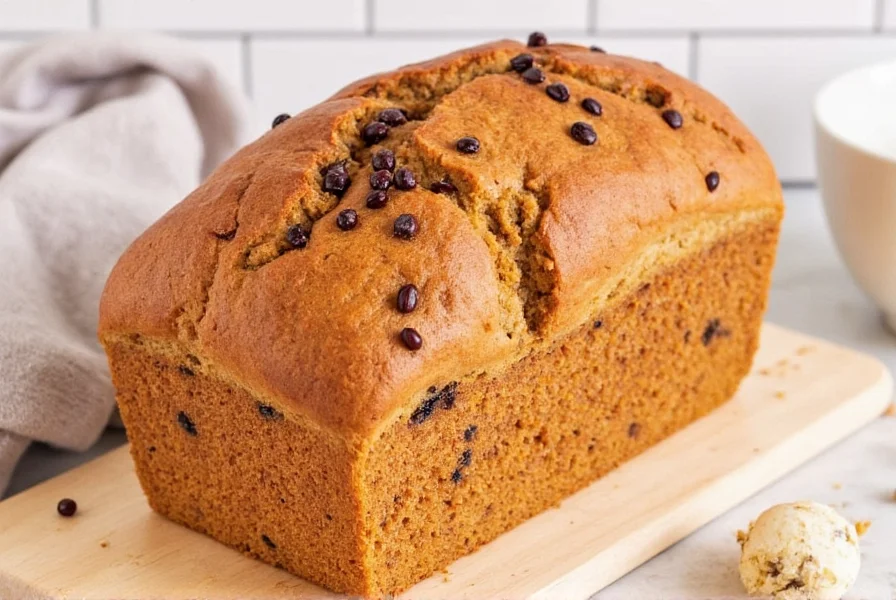If you've ever wanted to bake bakery-quality raisin cinnamon bread at home, this comprehensive recipe delivers. Unlike many versions that turn out dry or lack sufficient flavor, this method ensures a moist crumb with evenly distributed raisins and a pronounced cinnamon swirl that runs throughout the entire loaf.
Why This Raisin Cinnamon Bread Recipe Works
After testing numerous variations, this recipe stands out for its perfect balance of texture and flavor. The secret lies in the enriched dough that includes both milk and butter, creating a tender crumb that stays moist for days. The raisins are properly plumped before incorporation, preventing them from absorbing moisture from the dough during baking.

Essential Ingredients Explained
Understanding why each ingredient matters helps you become a better baker. Don't substitute haphazardly—these components work together for optimal results:
| Ingredient | Function | Key Tip |
|---|---|---|
| All-purpose flour | Provides structure | Spoon and level—don't scoop directly |
| Active dry yeast | Rising agent | Test freshness in warm water first |
| Whole milk | Enriches dough | Warm to 110°F (43°C) for best results |
| Unsalted butter | Adds tenderness | Must be softened, not melted |
| Golden raisins | Sweet fruit element | Plump in warm water before use |
Step-by-Step Baking Instructions
Dough Preparation (45 minutes)
- Dissolve 2¼ teaspoons active dry yeast and 1 tablespoon sugar in ½ cup warm milk (110°F). Let sit 5-10 minutes until foamy.
- In a stand mixer with dough hook, combine 3½ cups all-purpose flour, ¼ cup sugar, 1 teaspoon salt, and the yeast mixture.
- Add 1 large egg and ¼ cup softened butter. Mix on low until combined, then knead 5-7 minutes until smooth and elastic.
- Place dough in greased bowl, cover, and let rise in warm place until doubled (1-1½ hours).
Assembly and Baking (2 hours)
- Plump 1 cup raisins in warm water for 10 minutes, then drain thoroughly.
- Punch down risen dough and roll into 16x12 inch rectangle on floured surface.
- Spread ⅓ cup softened butter over dough, then sprinkle with ½ cup brown sugar and 2 tablespoons cinnamon.
- Scatter plumped raisins evenly over surface, pressing gently to adhere.
- Roll tightly from long side, pinch seam to seal, and place seam-side down in greased 9x5 inch loaf pan.
- Cover and let rise until dough crowns 1 inch above pan rim (45-60 minutes).
- Bake at 350°F (175°C) for 35-40 minutes until golden brown and internal temperature reaches 190°F.
- Cool in pan 10 minutes, then transfer to wire rack to cool completely before slicing.

Professional Baking Tips for Success
Even experienced bakers encounter issues with sweet breads. These tested tips ensure perfect results:
- Raisin preparation matters: Plumping raisins in warm water (or orange juice for extra flavor) prevents them from drying out your bread. Pat them completely dry before adding to dough.
- Temperature control: Your kitchen should be around 75°F (24°C) for optimal rising. Too cold and the dough won't rise properly; too warm and the yeast becomes overactive.
- Slicing technique: Use a serrated knife and wait until the bread is completely cool. Cutting too soon releases steam that should remain in the loaf.
- Swirl integrity: When rolling your dough, keep tension even but not too tight—this prevents the swirl from disappearing during baking.
Avoiding Common Raisin Bread Mistakes
Many home bakers encounter these issues with cinnamon raisin bread recipes:
- Dense texture: Usually caused by too much flour. Measure by spooning flour into your measuring cup and leveling off—don't scoop directly from the bag.
- Raisins sinking to bottom: Toss plumped raisins in 1 tablespoon of flour before adding to dough to help them stay suspended.
- Burnt edges: If your oven runs hot, reduce temperature by 25°F and extend baking time slightly.
- Dry crumb: Overbaking is the most common culprit. Use an instant-read thermometer—190°F is the perfect internal temperature.
Serving and Storage Recommendations
For the best eating experience with your homemade raisin cinnamon bread:
- Freshness window: This bread tastes best within 24-48 hours of baking when the crumb is at its most tender.
- Storage method: Keep in an airtight container at room temperature for up to 3 days. For longer storage, slice and freeze individual portions.
- Reviving stale bread: Lightly toast slices and spread with butter for near-fresh quality.
- Perfect pairings: Serve warm with cream cheese, pair with strong coffee, or enjoy as French toast for brunch.
Delicious Variations to Try
Once you've mastered the classic recipe, experiment with these popular adaptations:
- Nutty version: Add ½ cup chopped walnuts or pecans to the filling for extra crunch.
- Orange-infused: Substitute orange juice for water when plumping raisins and add 1 tablespoon zest to the dough.
- Gluten-free option: Use a quality 1:1 gluten-free flour blend and add 1 teaspoon xanthan gum.
- Whole wheat twist: Replace up to half the all-purpose flour with white whole wheat flour.
Frequently Asked Questions
Can I make raisin cinnamon bread without a stand mixer?
Yes, you can make raisin cinnamon bread by hand. Mix the dough in a large bowl using a wooden spoon, then turn out onto a floured surface and knead for 8-10 minutes until smooth and elastic. The key is developing the gluten through proper kneading technique.
Why did my raisin cinnamon bread turn out dry?
Dry raisin cinnamon bread typically results from overbaking, too much flour, or insufficient fat. Measure flour correctly by spooning into measuring cups, check internal temperature (should be 190°F), and ensure you've added the full amount of butter to the dough and filling.
How do I prevent the cinnamon swirl from disappearing during baking?
To maintain a visible cinnamon swirl, roll your dough tightly but evenly when forming the loaf. Pinch the seam well to seal, and avoid over-proofing before baking. Using a dark metal loaf pan rather than glass can also help create better definition in the swirl.
Can I prepare raisin cinnamon bread dough ahead of time?
Yes, you can refrigerate the shaped loaf in its pan overnight. After the first rise, shape the loaf, place in the greased pan, cover tightly, and refrigerate for up to 18 hours. The next morning, remove from refrigerator while oven preheats, then bake as directed—allowing 10-15 minutes extra rising time at room temperature.
What's the best way to freeze raisin cinnamon bread?
For best results, cool the bread completely, then wrap tightly in plastic wrap followed by aluminum foil. Slice before freezing for easy portioning. Properly wrapped, it will keep for 3 months. Thaw at room temperature or toast slices directly from frozen for quick serving.











 浙公网安备
33010002000092号
浙公网安备
33010002000092号 浙B2-20120091-4
浙B2-20120091-4